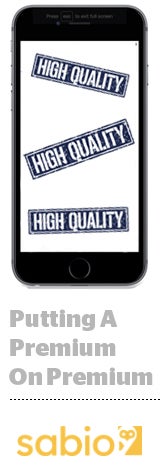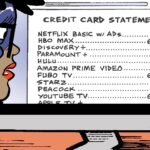Brands want high-quality mobile inventory – but they don’t have a standard way to define it, they can’t effectively measure it and there’s no easy way to find it at scale.
Which is why mobile ad tech company Sabio Mobile, whose clients include Toyota, Wells Fargo, McDonald’s, Viacom and Lowe’s, released a validated publisher tool on Tuesday to help buy-side players get a better idea of which supply sources to work with and where their ads actually end up running.
Although the programmatic landscape is starting to get more premium in nature, “the transparency still isn’t really there,” said Kristopher English, an associate media director at DigitasLBI, which has been working with Sabio Mobile to help vet publishers and identify high-quality supply sources.
“We cast a wide net and run across so many different sites from a programmatic standpoint that it’s hard to provide the full transparency our clients are looking for,” he said.
Rather than assess quality with proxies like a publisher’s reputation, historical viewability or past performance, Sabio defines app publishers as premium if they’ve been certified by either Google Play or Apple’s App Store; if they provide a brand-safe environment and a low threshold for fraud; and if they have good app user ratings, healthy estimated monthly downloads and solid clickthrough rate and viewability benchmarks.
Just focusing on one or two of those criteria isn’t enough to ensure quality, said Sabio CEO Aziz Rahim.
For example, if an official app store has given an app its blessing, that app is probably free of malware, but that doesn’t mean the app is popular. By the same token, an app might garner lots of downloads and engagement but also have a disproportionate number of clicks to impressions served, which may signify fraud.
But even with benchmarks in place, the notion of premium is subjective and often depends on an advertiser’s particular KPIs and personal risk tolerance. What’s premium for Mountain Dew might not be brand-safe for Disney.
“When brands work with us, we have them specifically spell out their objectives,” said Rahim, who noted that Sabio also uses its direct relationships with publishers – its SDK has a footprint across roughly 20,000 apps – to derive user insights and create audience segments that its clients can deploy across validated publishers.
To develop its segments, Sabio analyzes mobile behavior to identify which apps users have downloaded on their devices, cross-referenced with their geolocation preferences, location history and third-party demographic data from Oracle and use data from comScore.
App download history is particularly helpful for drawing conclusions about consumer preferences or what might be happening in their life at a particular period in time.
A young woman with the MTV app and a number of gaming apps on her phone, for example, might also likely be interested in reality TV, while a newly minted father, like Rahim himself, is probably going to start downloading apps about child care or consuming more baby-related content.
These app affinity segments mixed with geolocation data have helped DigitasLBI get more granular with its targeting, English said. In a recent test campaign, for example, the agency helped Pandora drive brand perception and increase frequency on mobile across certain markets in conjunction with an out-of-home activation.
DigitasLBI was also able to see exactly which inventory sources the ads were running against, which “can be difficult to do and is a big thing for us,” English said.
“We’ve run into issues with certain mobile partners that can’t tell us what sites performed the best or why some sites aren’t performing, because they don’t have direct publisher relationships,” he said. “Our clients want to do a deeper dive on where their ads are running, and it’s been impossible to give them that information. The one thing we’ve really been looking for on the agency side is full transparency.”















